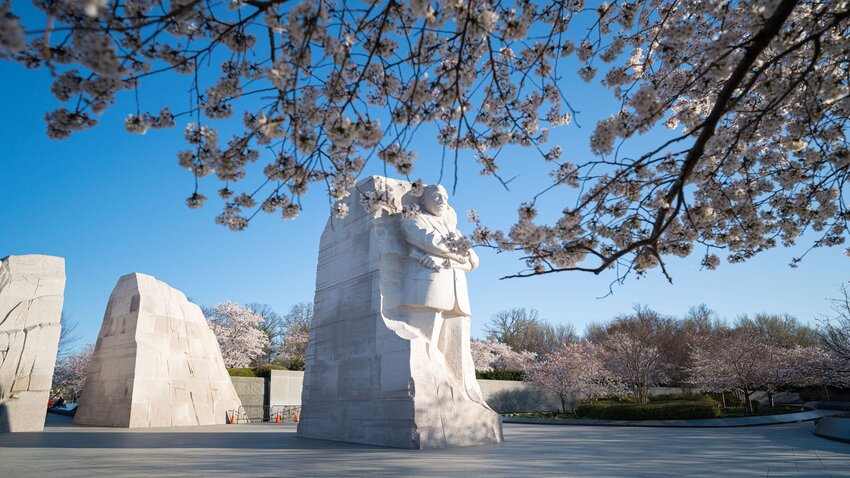There’s no way to fully appreciate every single monument in Washington D.C. The city is full of them, over 160 monuments and memorials celebrating the individuals, moments, and world events that made D.C. into what it is today. You could live in the city for years and still not make it to all of them.
But for your visit, there are a few — the popular, the known, and some that slip off the top lists — that will ground you in American history like nothing else. These moments, people, and places in the long path of the U.S. are immortalized in stone, bronze, and marble, and are ready for you year round.
Washington Monument

The monuments that make up the iconic D.C. skyline come first on our best-of-D.C. list, both because they’re difficult to miss and because they’re quite impressive — the Washington Monument obelisk is a feat of construction if nothing else. As one of the world’s tallest obelisks, this marble, granite, and bluestone memorial to George Washington shoots almost 555 feet into the air over the National Mall. From 1848 to 1884 (with a 23 year funding pause in the middle, visible in the shift of stone color), Washingtonians built this hollow structure with internal stairs winding up to the pyramidion. Though the stairs are no longer in use, be sure to get an elevator ticket for the most memorable panorama in D.C.
Lincoln Memorial
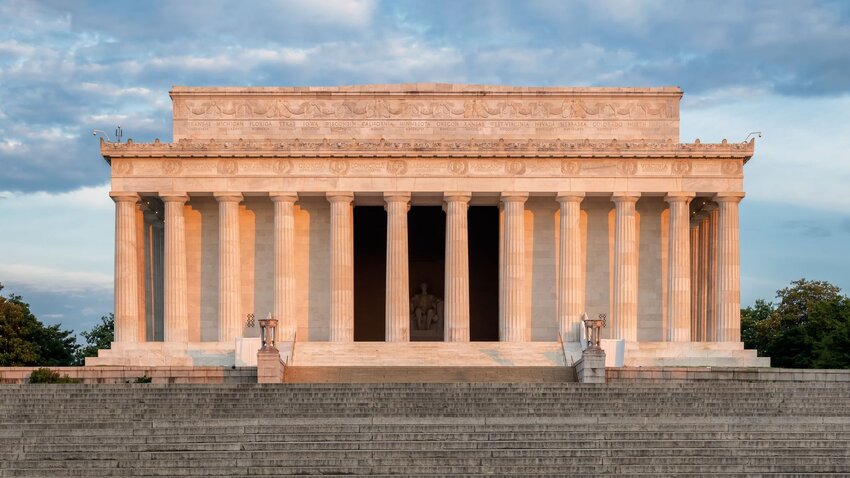
One of the other most visited memorials on the National Mall is the neoclassical temple dedicated to America’s 16th president. The Lincoln Memorial sits atop a series of stone steps, guiding visitors past the fluted Doric columns and into the chamber where a larger-than-life statue of Abraham Lincoln sits, accompanied by inscriptions of the Gettysburg Address and his second inaugural address. Many of our nation’s protests and movements used this impressive building as a backdrop, a symbolic space of inclusion and patriotism. The gift shop and small museum under the monument get deeper into the history, construction, and subsequent importance of the landmark for cultural revolutions.
Martin Luther King, Jr. Memorial
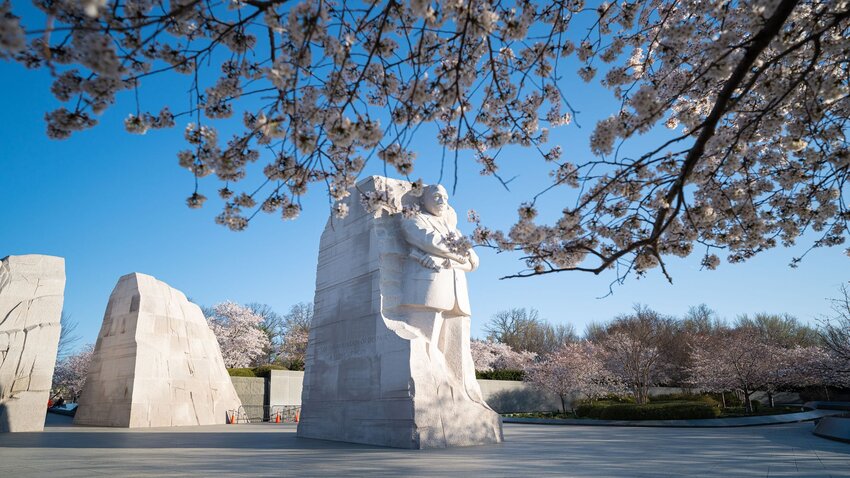
“Out of the mountain of despair, a stone of hope,” Dr. Martin Luther King Jr. said from the steps of the Lincoln Memorial. Decades later, his words would form the physical foundations of his own monument in West Potomac Park, steps away from the National Mall. Visitors move through a granite mountain and towards The Stone of Hope, where Dr. King stands immortalized, arms folded, looking out over the Tidal Basin. The monument commemorates the Civil Rights Act of 1964, and the Inscription Wall unfolding on either side holds quotes from the Montgomery bus boycott to the sermon from Dr. Martin Luther King, Jr. days before his assassination — powerful messages that are still applicable today.
Thomas Jefferson Memorial
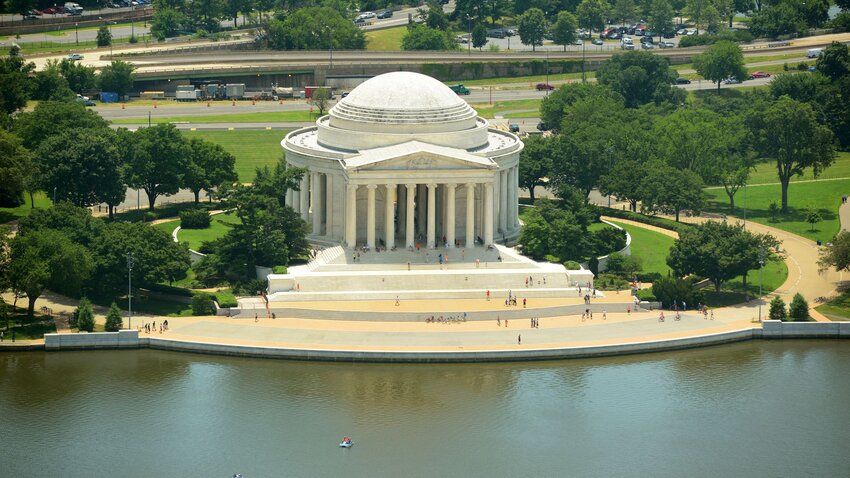
Sponsored by President Franklin Roosevelt, the Thomas Jefferson Memorial echoes the temple architecture seen elsewhere in Washington D.C. Directly south of the White House, the pantheon building houses a bronze statue of Jefferson and inscriptions of some of his most famous phrasings. Surrounded by cherry blossoms (which are especially impressive in springtime), the Jefferson Memorial looks out onto the Tidal Basin, with Dr. King’s memorial and the Washington Monument visible from the far shore. For a unique angle, take a paddle boat around the Basin to see the monument from the water.
Vietnam Veterans Memorial

Visitors are quiet while experiencing the Vietnam Veterans Memorial as they descend slightly into the earth, the black, etched stone rising above their heads. While it’s not the only memorial dedicated to the tragedy of the Vietnam war — the Vietnam Women’s Memorial and The Three Soldiers monument came later — this national memorial designed by Maya Lin offers an immersive experience unlike any other on the National Mall. 58,320 names, one for each of the known dead or missing U.S. soldiers, are listed beside each other. It’s a solemn structure that honors and appreciates every lost life.
Korean War Veterans Memorial
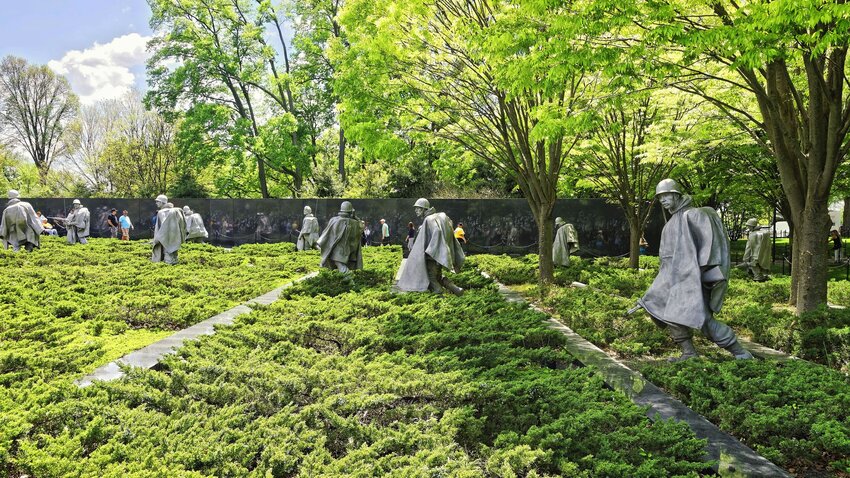
Southeast of the Lincoln Memorial and south of the Vietnam Memorial, an equally somber memorial honors the lives of the soldiers lost during the Korean War. The entire structure is a thin triangle pointed towards a shallow pool. Granite walls make up the Mural Wall on one side, a shiny surface sandblasted with images of soldiers, equipment, and those directly involved in the war. The Column is within the walls, a carved platoon of soldiers on patrol in combat gear. North of the statues is the United Nations Wall. The Pool of Remembrance sits at the very tip of the triangle, surrounded by rounded trees, and a memorial wall with the names of those who died in conflict is opening later this year.
National World War II Memorial
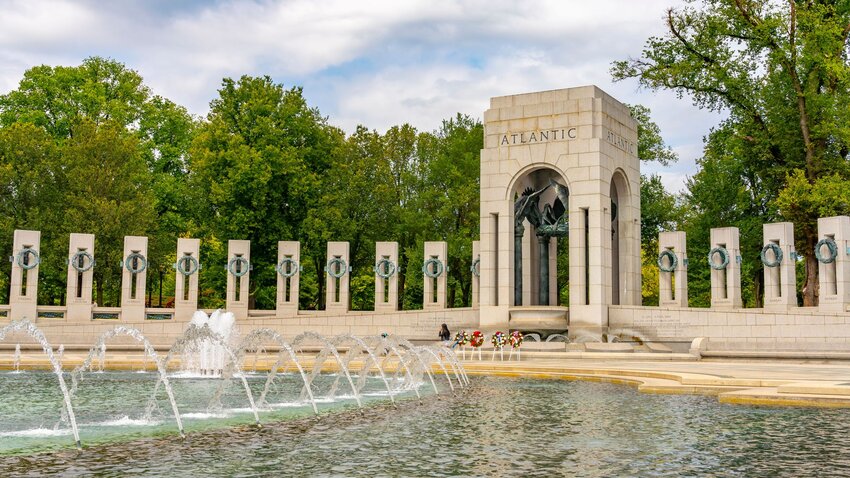
Between the Reflecting Pool and the Washington Monument, 56 pillars around an oval pool represent the U.S. states and territories that participated in the Second World War. Two arches on either side pay homage to the Atlantic and Pacific Theaters. There’s a lot more to this monument than meets the eye, so while searching for your state or territory, don’t miss the smaller details carved into the stone entrance, the Freedom Wall on the west side of the plaza, or the inscriptions honoring American soldiers.
National World War I Memorial
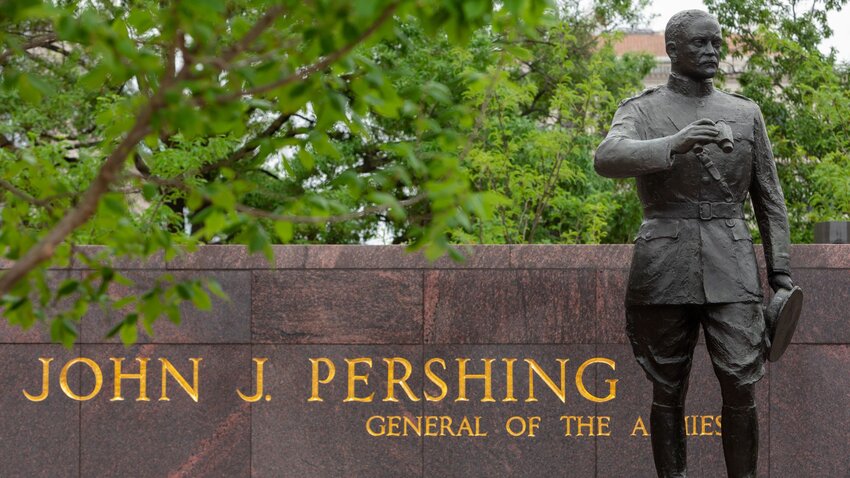
In Pershing Park, which is steps away from the White House and Ellipse, a monument recognizing the “Weight of Sacrifice” is D.C.’s newest evolving monument to WWI. The memorial to General Pershing, a commander during the war, is incorporated into the sculpture, which will feature the journey of a soldier through WWI. This monument recognizes the 116,516 soldiers who lost their lives during the war as well as the 4.7 million Americans who served.
Franklin Delano Roosevelt Memorial
The Franklin Delano Roosevelt Memorial is often missed in the monument circuit (due to its size and location), but is still one of the most memorable. You’ll walk through FDR’s 12 years in office through four outdoor “rooms,” each dedicated to one of his terms. Fountains flooded with symbolism gush between sculptures of President Roosevelt beside his dog and First Lady Eleanor Roosevelt before the United Nations. Alongside these representations are moments from the Great Depression: a man listens to a fireside chat and others wait in bread lines. Given Roosevelt’s disability, this memorial is designed for people of all abilities, and includes braille dots and tactile reliefs of faces.
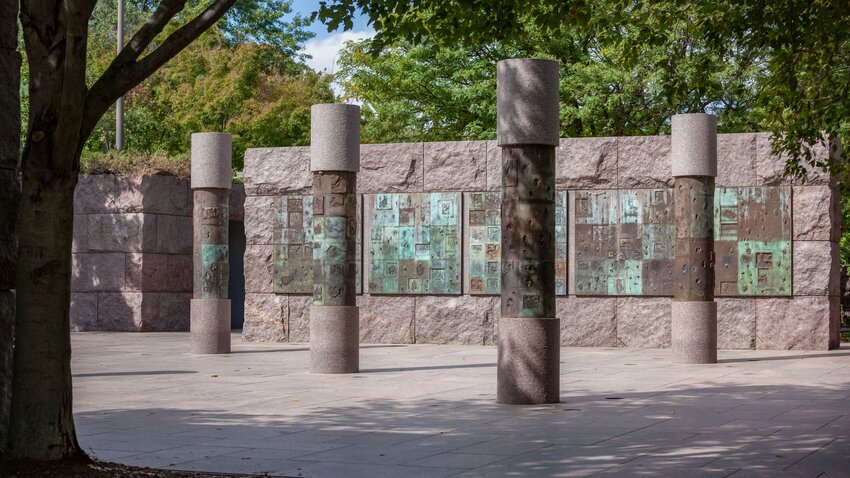
African American Civil War Memorial
When you step away from the National Mall memorials and into the bustling nightlife and activity of the city, monuments to American history accompany you. The African American Civil War Memorial is located in the historic U Street Corridor and across from the African American Civil War Museum and is well worth a visit. The nine-foot bronze statue in the center of the rounded monument space is known as The Spirit of Freedom, and the names of those who served in the war are etched into the graceful curved walls that surround it. The memorial and museum work to recognize the historic and heroic role of the 209,145 troops of color that fought to end slavery and unite America.

